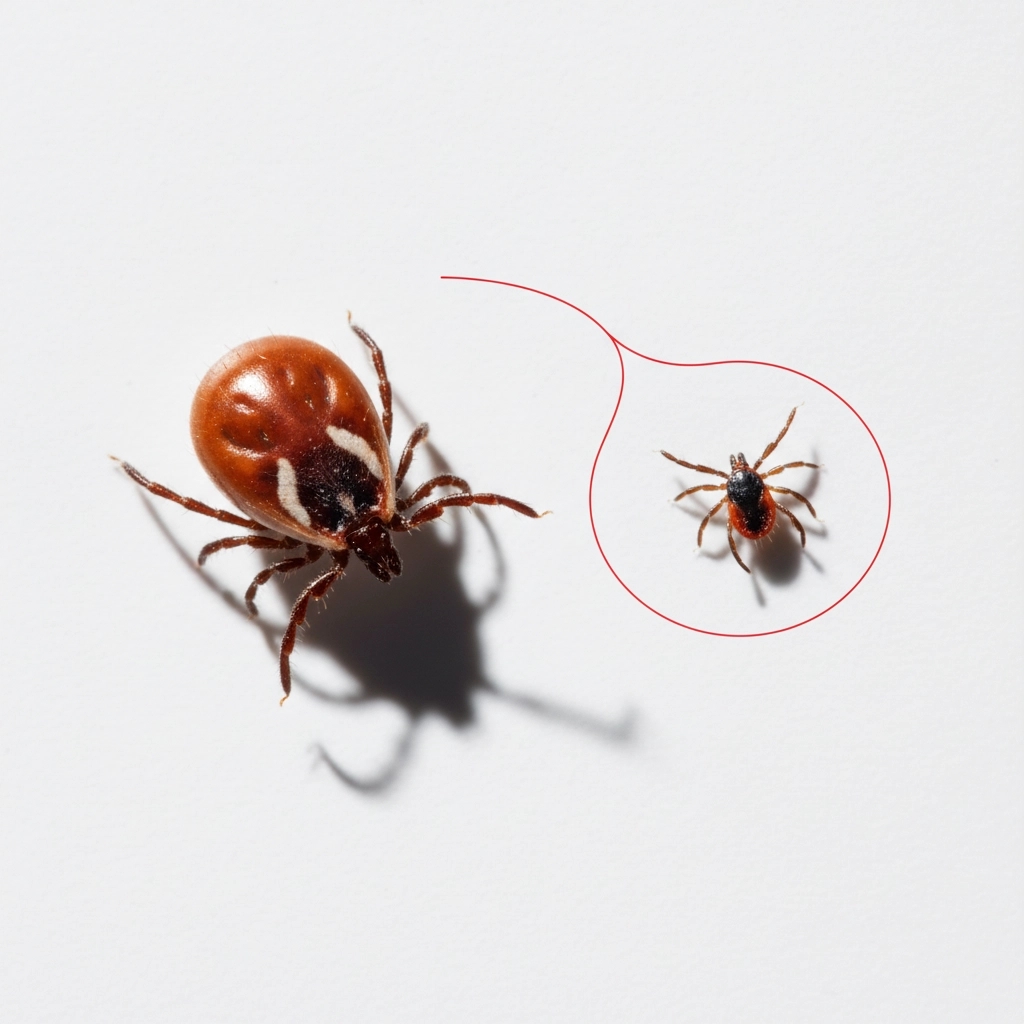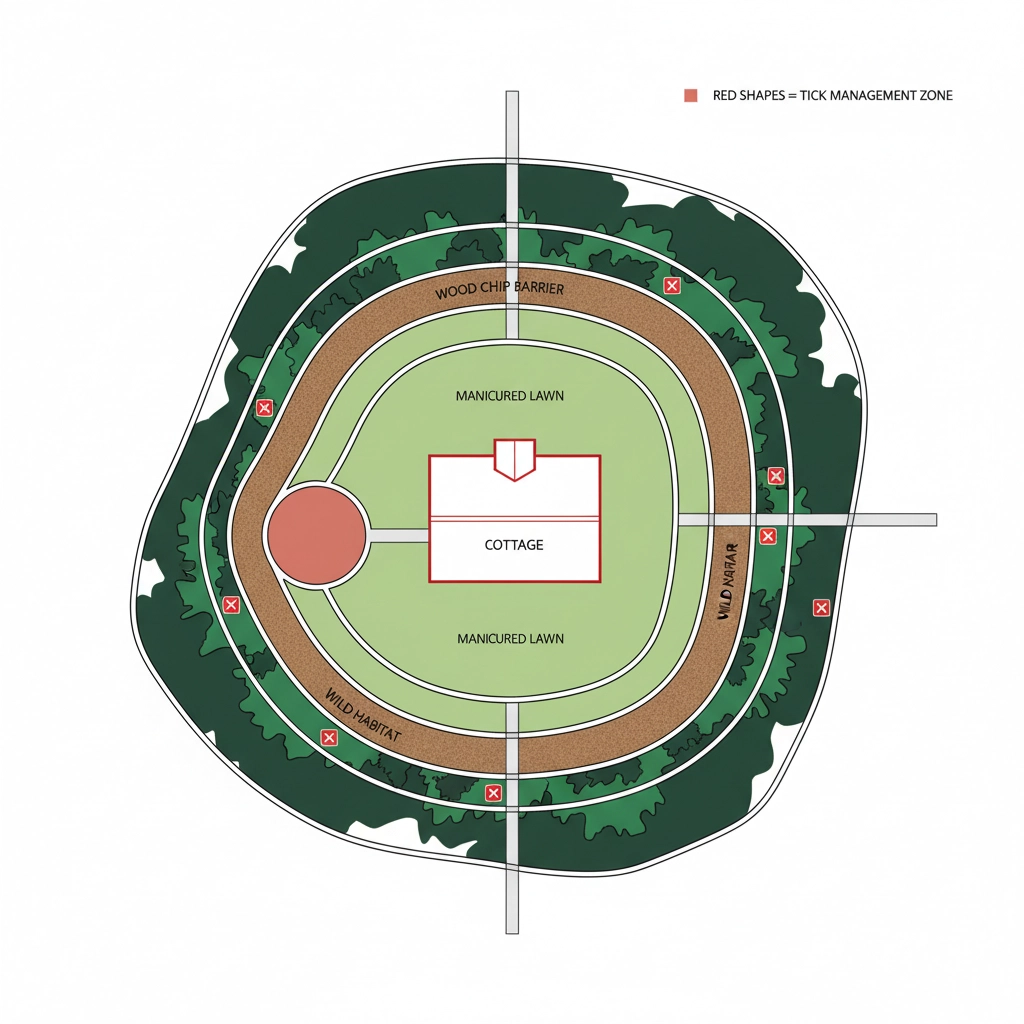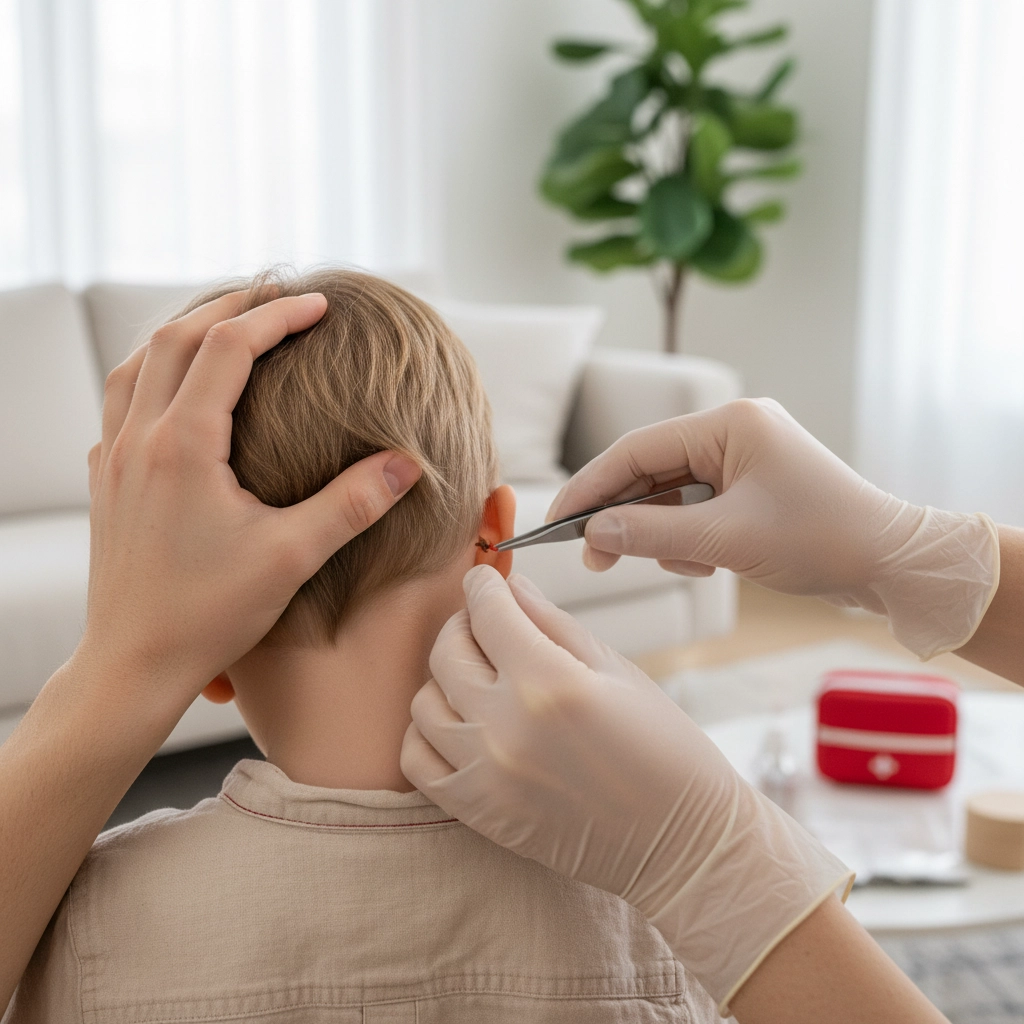Ticks and Lyme Disease in Haliburton: The Ultimate Prevention Guide for Cottage Owners
- Targeted Wildlife and Pest Solutions

- Sep 27
- 5 min read
Cottage life in Haliburton offers unparalleled access to Ontario's natural beauty, but it also puts you at increased risk for tick encounters and potential Lyme disease exposure. As tick populations expand throughout the region, understanding how to protect your family and property becomes essential for safe outdoor enjoyment.
The Haliburton, Kawartha, Pine Ridge District Health Unit actively monitors tick populations and emphasizes that blacklegged ticks carrying Lyme disease bacteria have established themselves throughout the area. Your cottage property, with its wooded surroundings and natural landscapes, creates ideal conditions for these tiny but potentially dangerous pests.
Understanding the Lyme Disease Threat
Lyme disease results from infection by Borrelia burgdorferi, a corkscrew-shaped bacteria transmitted exclusively by blacklegged ticks in Ontario. These ticks are significantly smaller than common dog ticks, making them harder to detect on your body and clothing.

The disease progresses through distinct stages if left untreated. Early symptoms often resemble flu-like illness, including fever, headache, fatigue, and muscle aches. The characteristic "bull's-eye" rash appears in roughly 70-80% of cases, typically developing 3-30 days after the tick bite. Without proper treatment, Lyme disease can advance to affect your joints, heart, and nervous system.
Why Tick Populations Are Rising in Haliburton
Several factors contribute to increasing tick presence in the Haliburton region. Climate change extends the active season for ticks, allowing them to survive milder winters and remain active for longer periods. Warming temperatures also expand their suitable habitat range northward.
Deer populations serve as primary hosts for adult blacklegged ticks, and healthy deer numbers in cottage country support thriving tick communities. Additionally, small mammals like mice and chipmunks provide blood meals for juvenile ticks, maintaining population cycles near your property.
Human activity patterns also play a role. More people spending time outdoors in natural areas increases opportunities for tick encounters, while development that creates edge habitats between wooded and open areas can concentrate tick populations.
Identifying Blacklegged Ticks
Proper tick identification helps you assess your risk level after outdoor activities. Blacklegged ticks appear much smaller than dog ticks, with adult females measuring roughly 3-4mm before feeding. Males appear darker and slightly smaller than females.

Nymphs pose the greatest threat during late spring and early summer, as their tiny size makes them extremely difficult to spot. These juvenile ticks are about the size of a poppy seed, making thorough tick checks essential after any outdoor time.
Unlike dog ticks, blacklegged ticks have a distinctive appearance with their reddish-brown color and darker legs. However, once engorged with blood, all ticks become larger and more grayish in appearance.
Personal Protection Strategies
Your first line of defense begins with proper clothing choices. Wear light-colored, long-sleeved shirts and long pants tucked into socks when venturing into tick habitat. Light colors make ticks easier to spot before they reach your skin.
Apply insect repellent containing DEET or icaridin to exposed skin and clothing, following manufacturer instructions carefully. For extended outdoor activities, treat your clothing and gear with permethrin-based products designed for tick prevention.
When hiking or working outdoors, stay on established trails and avoid brushing against tall grass, shrubs, and other vegetation where ticks position themselves. Carry fine-tipped tweezers in your outdoor gear for immediate tick removal if needed.
Property Management for Tick Control
Creating tick-unfriendly conditions around your cottage reduces encounters near your living spaces. Maintain a well-manicured lawn area extending at least 3-6 feet from your cottage structures. Regular mowing keeps grass short and eliminates tick habitat.

Install a wood chip or bark mulch barrier between maintained lawn areas and taller grass or brush. This creates a dry zone that ticks avoid, effectively separating your activity areas from tick habitat.
Remove leaf litter, tall grasses, and brush from around patios, decks, and frequently used outdoor areas. Keep playground equipment, lawn furniture, and outdoor dining areas away from woodland edges where possible.
Consider deer management strategies, as these animals transport ticks onto your property. Installing deer fencing around gardens and landscaping reduces deer traffic and associated tick introduction.
Eco-Friendly Tick Prevention Methods
Sustainable tick control protects your family while preserving the natural environment that makes cottage life appealing. Encourage natural predators by maintaining bird habitat through native plantings and bird houses. Many bird species consume significant numbers of ticks.
Plant tick-repelling herbs and flowers around outdoor living spaces. Lavender, rosemary, mint, and marigolds naturally deter ticks while enhancing your landscape. Essential oil barriers using these plants can create protected zones around decks and patios.
Guinea fowl and chickens serve as effective biological tick control if your property regulations allow poultry. These birds actively hunt and consume ticks while providing other benefits to rural properties.
Post-Outdoor Activity Protocols
Implement systematic tick checks after every outdoor activity. Examine your entire body, paying special attention to areas where ticks commonly attach: behind ears, along the hairline, under arms, around the waist, behind knees, and between toes.

Use a hand mirror or ask family members to check areas you cannot see. Check children thoroughly, as their smaller size brings them into closer contact with tick habitat during outdoor play.
Shower within two hours of coming indoors when possible, as this removes unattached ticks and provides opportunity for tick discovery. Place outdoor clothing directly into a dryer on high heat for 10 minutes before washing to kill any remaining ticks.
Safe Tick Removal Techniques
If you discover an attached tick, proper removal minimizes disease transmission risk. Use fine-tipped tweezers to grasp the tick as close to your skin surface as possible. Pull upward with steady, even pressure, avoiding twisting or jerking motions.
Clean the bite site and your hands thoroughly with rubbing alcohol or soap and water after removal. Save the removed tick in a sealed container with the date and location noted for potential identification needs.
Never use heat, petroleum jelly, or other home remedies for tick removal, as these methods can increase disease transmission risk by causing the tick to regurgitate infected material.
When to Seek Medical Attention
Contact your healthcare provider if you develop symptoms following a tick bite, particularly the characteristic expanding rash, fever, or flu-like symptoms. Early treatment with appropriate antibiotics proves highly effective against Lyme disease.
Monitor the bite site for 30 days after tick removal, watching for expanding redness or rash development. Document symptoms with photos and notes to assist healthcare providers with diagnosis.
Professional Tick Management Solutions
While personal protection and property maintenance provide important first-line defenses, professional tick control offers comprehensive protection for your cottage property. Targeted Wildlife and Pest Solutions provides eco-friendly tick management services designed specifically for cottage owners in the Haliburton region.
Professional services include property assessments to identify high-risk areas, targeted treatment applications that minimize environmental impact, and ongoing monitoring to ensure effective tick population control. These services integrate seamlessly with your existing property management routines while providing expert-level protection.
Our sustainable approach focuses on habitat modification recommendations, strategic treatment timing, and long-term prevention strategies that protect your family while preserving the natural character of your cottage property.
Your cottage should remain a place of relaxation and outdoor enjoyment, not worry about tick-borne illness. Professional tick management provides peace of mind while allowing you to fully embrace cottage life in beautiful Haliburton.
Contact Targeted Wildlife and Pest Solutions to discuss customized tick control solutions for your property. Our local expertise and commitment to sustainable pest management ensure effective protection that aligns with your cottage lifestyle and environmental values.
Comments